The fall/winter 16 men’s shows have been defined by two factors: the death of David Bowie, and the transformations happening at classic houses such as Roberto Cavalli, Fendi, Balenciaga, and at Lanvin and Paul Smith, who rang out the season on Sunday in Paris. For Sir Paul Smith, it’s a season he’ll never forget. A good friend and collaborator of Bowie’s since their early careers, they did their last project together — a limited edition Blackstar t-shirt — only three days before he died, and on that morning Sir Paul had to put his grief on hold and host a presentation at London Collections: Men. Two weeks on, he’d had time to reflect. Over the past seasons, he’s been putting his house through the biggest changes in its fifty-year history, steering it in a more directional way, amalgamating his four men’s and four women’s lines into just two lines for each, and focusing on bringing out the incredible Paul Smith legacy that’s currently being referenced around the fashion landscape in the opulent and bohemian rock ‘n’ roll wave reflected at brands such as Gucci, Valentino, Cavalli, Zegna, Berluti and even Topman.
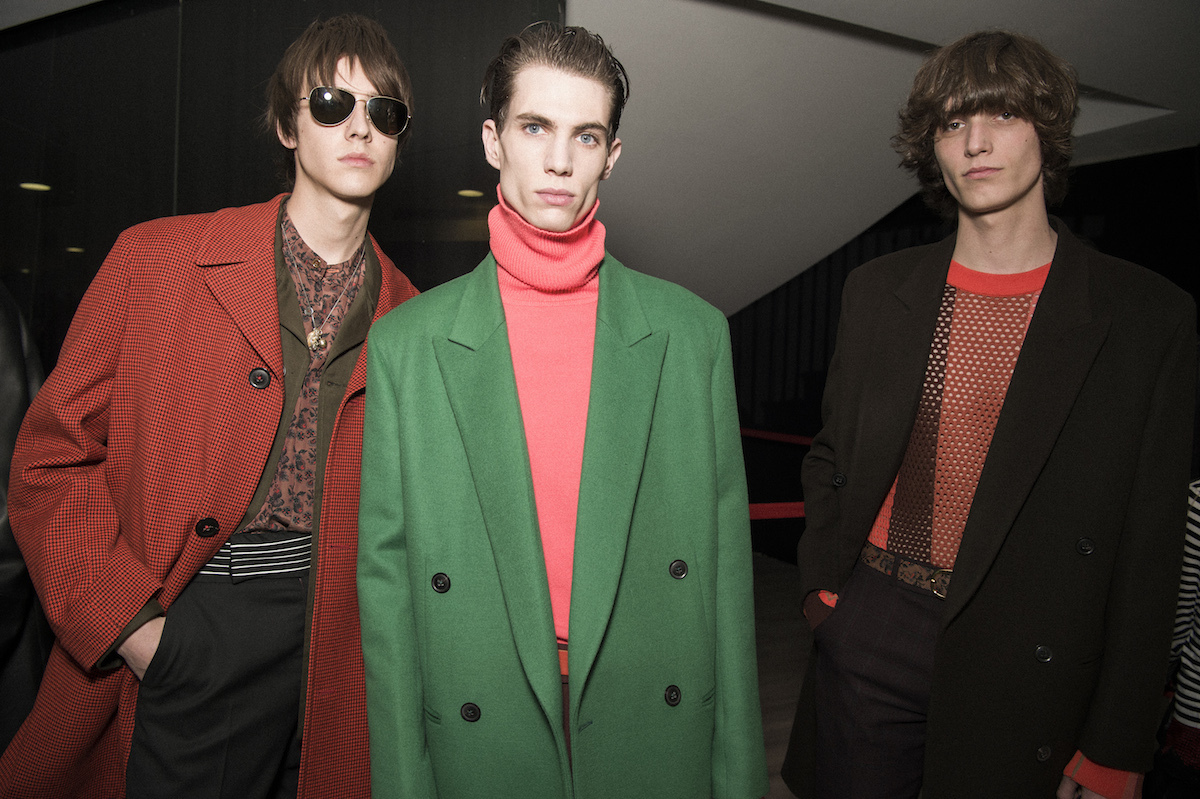
“I was really just looking at things I’ve done in the past,” Sir Paul said after his show, which — seasons after he began his brand transformation — seemed to finally resonate with the fashion tastemakers in attendance, whose views aren’t always easy to rock. “That was a really nice way to finish the shows,” said one editor-in-chief on the front row, while backstage critics appeared unusually animated, speaking to the legend designer. “What was nice about that,” Sir Paul continued, “was looking at my past through the eyes of my younger design helpers and how positive they look at an overcoat. I would say, ‘Oh, I did that in the 80s,’ and they’d be like, ‘Yeah, but it’s fantastic!’ So it’s quite nice to see it through young, new eyes.” The collection drew on the hard core of Paul Smith’s 70s archive: glam rock, mod, eccentric, and louche and luxe in a slightly gritty way that could best be described as innately British. These were the garments, which first made Bowie fall in love with Sir Paul’s work and recognize its influence on British fashion and culture.
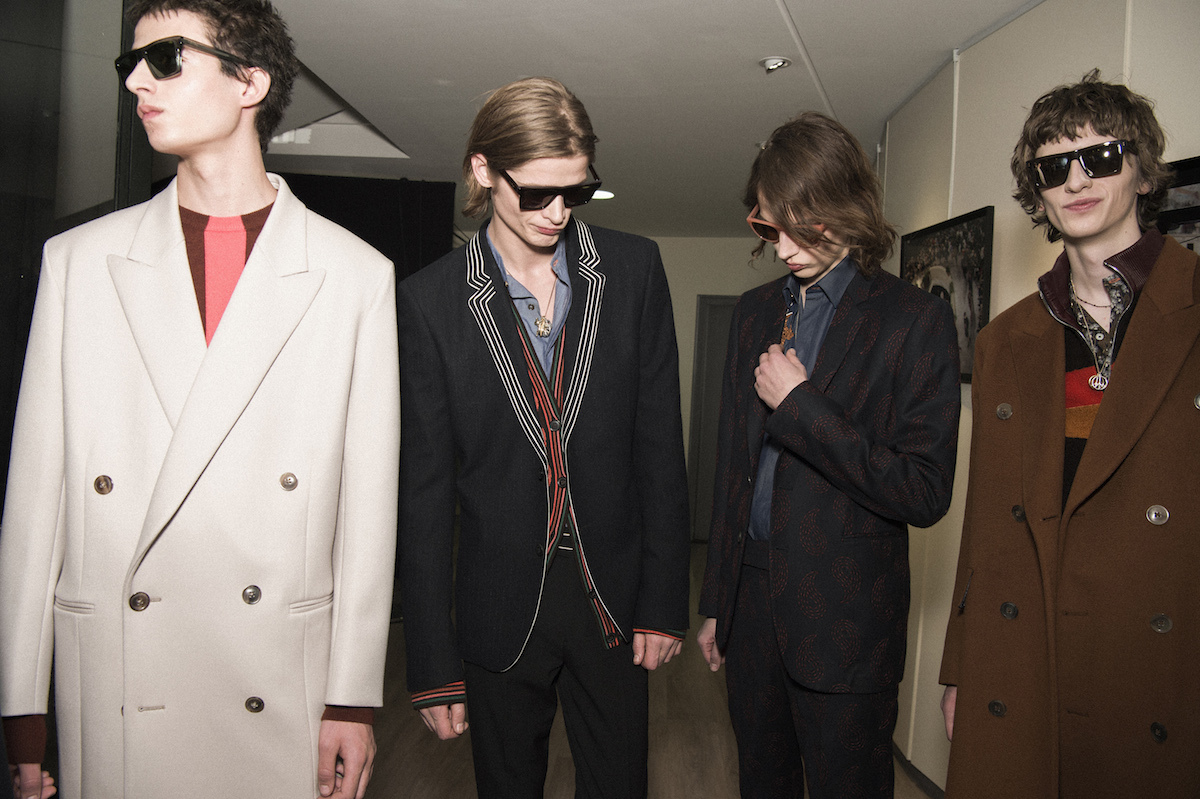
The soundtrack sampled a number of bands from the 60s and 70s, and when the intro to “Under Pressure” slowly started building within the mix, the sleep-deprived and therefore rather emotional editors present — yours truly included — found it hard not to choke. Of all the people who’ve paid tribute to Bowie this season – some more appropriately than others – Sir Paul is the only designer, who truly knew him. When he played “Oh You Pretty Things!” for his finale and those young pretty things walked around the beautiful Bourse in garments historically so interlinked with Bowie himself, tears were hard to hold back. It was the same case backstage where a visibly moved Sir Paul had to take a moment. “It was a nice mix of music: The Stranglers, The Clash, Small Faces, The Beatles, and then of course, my mate, which is…” he paused and looked away, tearing up, “… hard to talk about.” It was incredibly emotional, not least on the backdrop of a collection that felt so personal to him but at once so new and exciting for the brand, too.
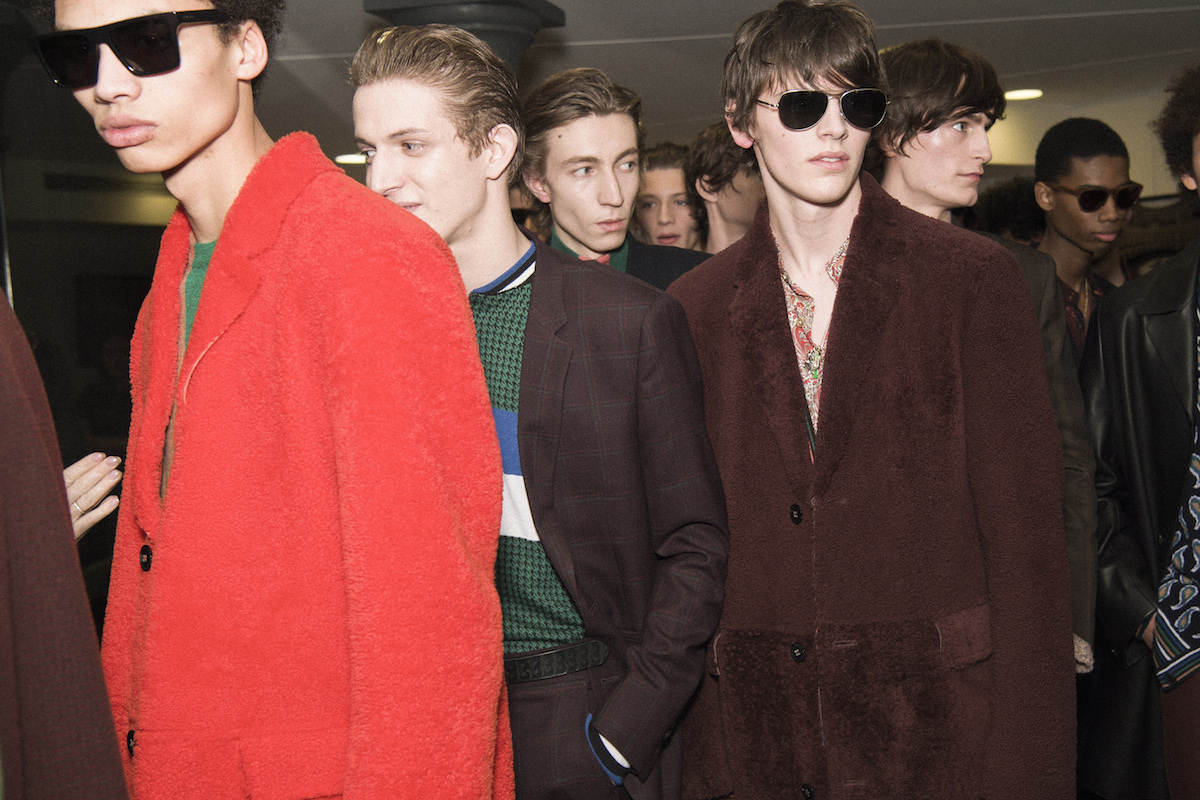
“Hand-embroidery, silk printing, humor, lots of layer. The irreverence of a cashmere coat with cotton drill layering underneath and a little liberty print shirt and a bit of jewelry,” Sir Paul mused, listing some of the elements he’d revived from his archive and reinvented for the collection. “I’d forgotten how when Pauline and I started, we just did so much that was really special and different,” he said, referring to his wife Lady Pauline Denyer. “I did work with Jimmy Page—it’s true. I did work with Bowie—it’s true. It’s not made up. It’s not a marketing thing.” In the sea of Bowie tributes and 70s fashion currently taking place, it was an important point for him to make, and he couldn’t have done it in a more dignified way. Lucas Ossendrijver was faced with some changes of his own at Lanvin on Sunday morning where he showed his first collection since the departure of Alber Elbaz. His former boss posted an Instragram greeting a few hours before show time sending his best wishes for a great show—and it was.

There’s no doubt that Ossendrijver and Elbaz respected each other and worked well together. After all, they worked side by side for the ten years Ossendrijver has now been at Lanvin. “When I started we had a very small show in Crillon. I had one assistant. Now I have a big team, the space we’re in is big. It’s been quite a journey,” he said after the show. With the change this house has gone through over the season, a certain sense of freedom for Ossendrijver was as inevitable as it was evident in his first solo effort. It was felt in the low-key, paired-down sentiment of the collection, which stripped off the glamorous elements of Elbaz’ Parisian touch and focused on a more relaxed, at times slouchy idea of the Lanvin man. It was 90s’ grunge, the really polished Lanvin way, backed up by a new type of cast. “The boys are a bit older. Lots of long hair, a bit scruffy, a bit floppy, sometimes. When I was doing the casting, every time I asked the boys, ‘How old are you? Where are you from?’ They would say, ‘I’m from Sweden. I’m fifteen. I’m from Germany, I’m sixteen.’ And to me it just felt perverse, almost,” Ossendrijver said.
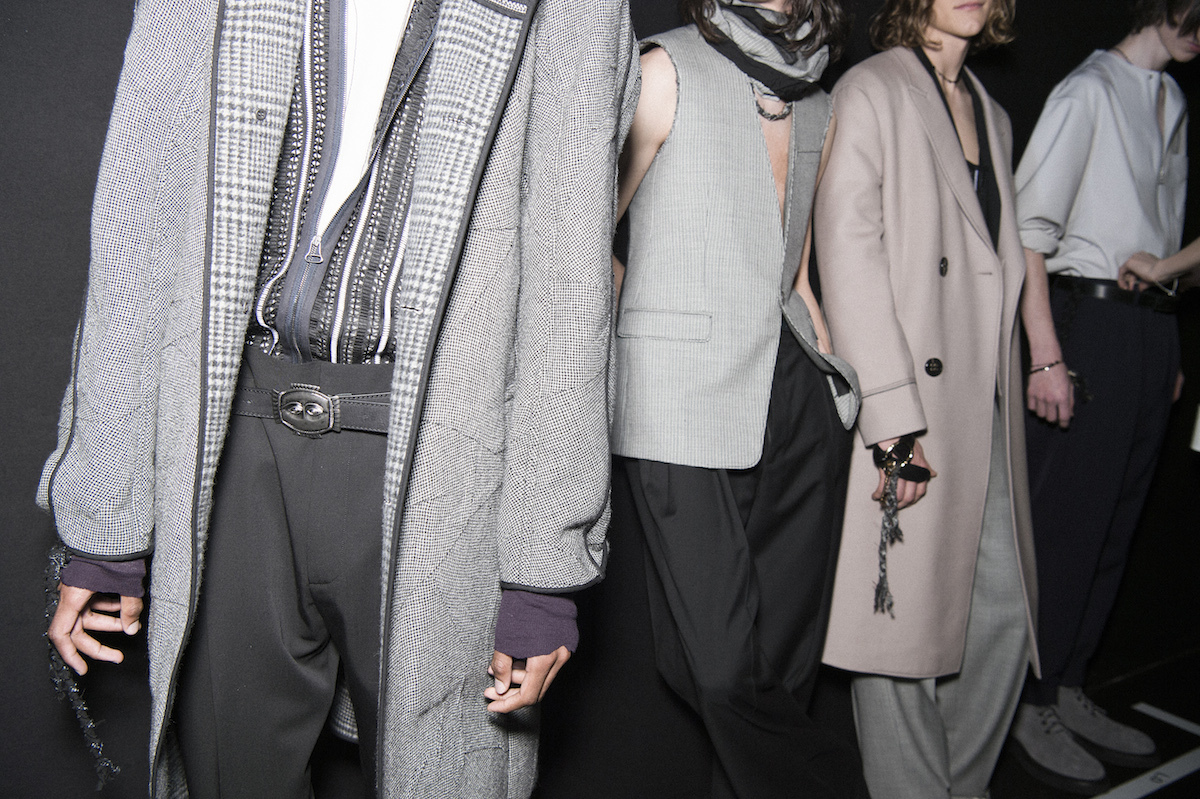
“I thought, I want men and boys that have a little bit more experience and are a bit more self-assured.” His words could have been the tagline for his first season on his own, which had to reflect a change. Ossendrijver’s statement of creative independence wasn’t a loud one, but in its simplicity it was a resounding antidote to the opulence, which has largely defined the fall/winter 16 men’s shows. At Y-3, Yohji Yamamoto reminded us who the original Adidas wunderkind was—before Kanye West and White Mountaineering started playing around with the brand’s fabrications and techniques. The collection effortlessly fused the trademarks of Yamamoto with the hi-tech sporty performance vibe that’s made Adidas every trendy boy’s go-to label for the kind of clothes their idols currently wear. Watching the show, it was an important reminder of how people are dressing right now, outside of the fashion show bubble we’ve found ourselves in for the last three weeks, and how menswear itself is going through some major changes.
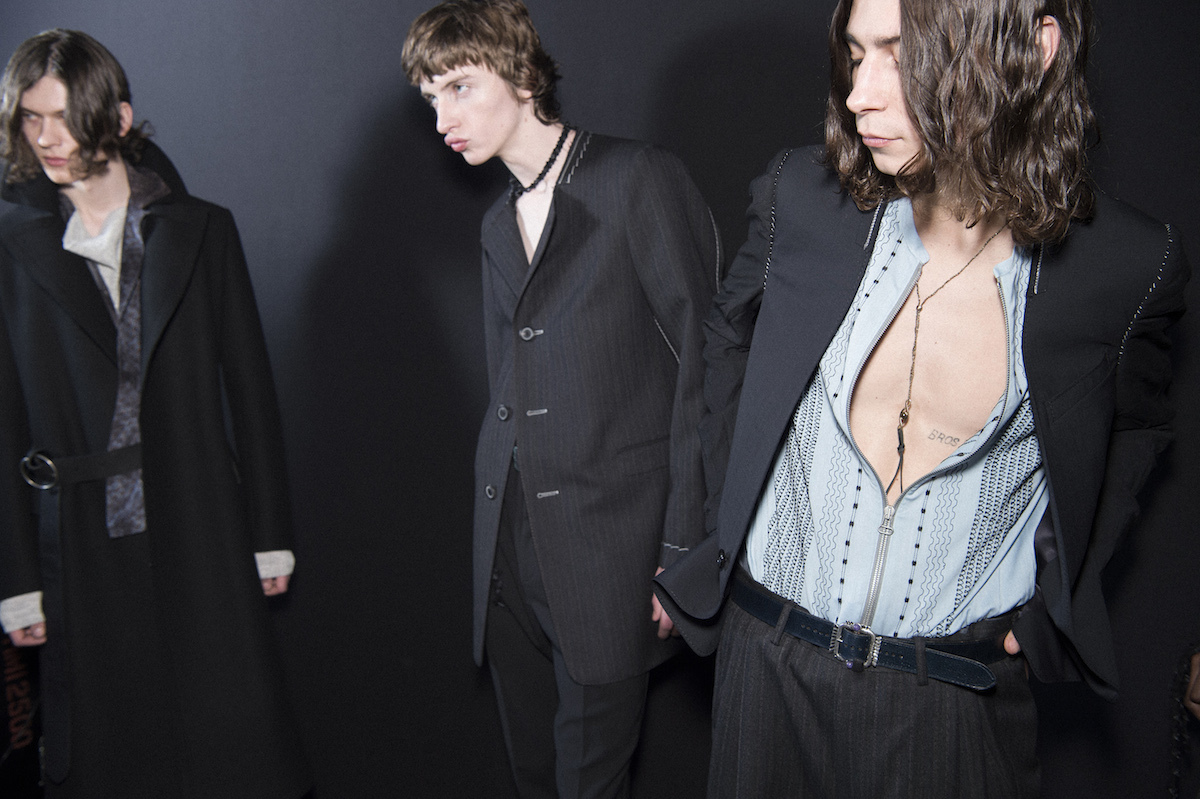
Credits
Text Anders Christian Madsen
Photography Jason Lloyd Evans
